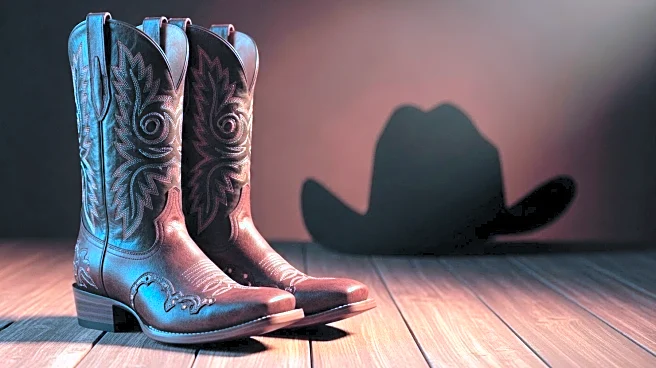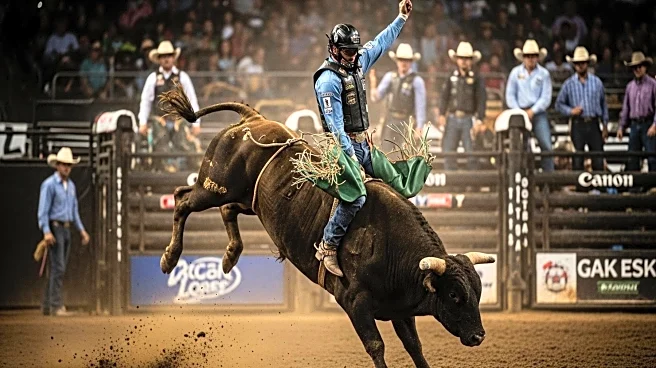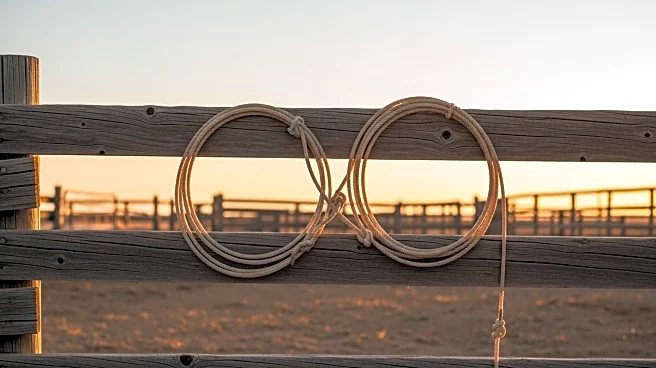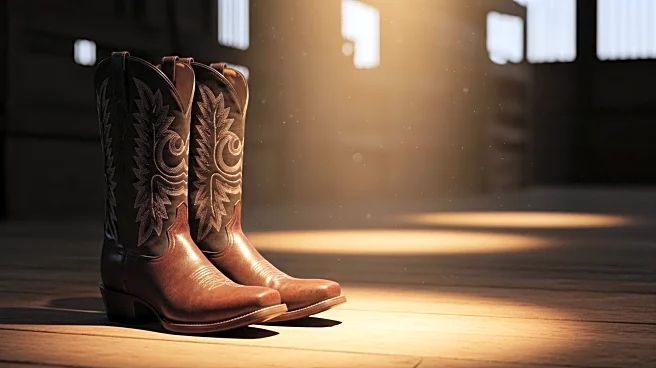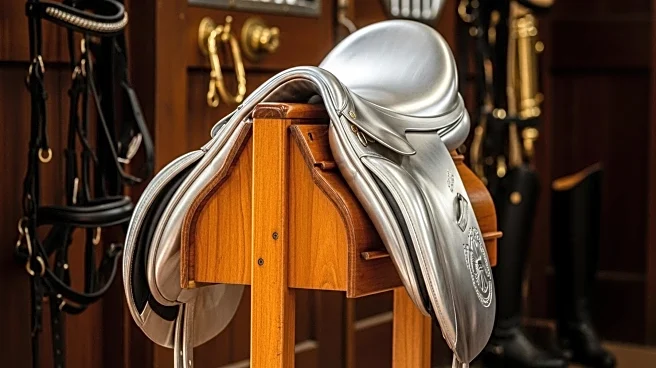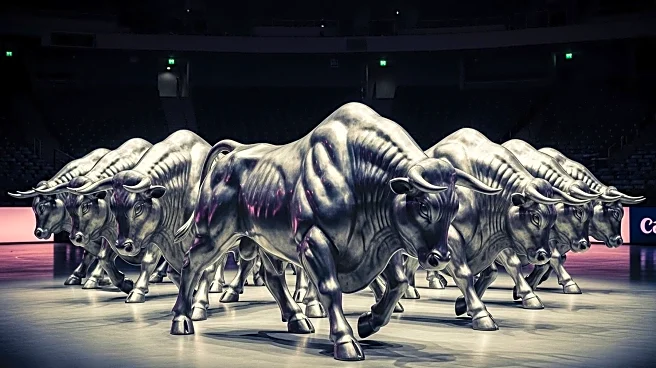What's Happening?
Rodeo contestants are often considered some of the toughest athletes in professional sports due to the unique challenges they face. Unlike other sports where conditions can be controlled, rodeo athletes compete in unpredictable environments and against animal athletes with minds of their own. Events like bull riding and tie-down roping require competitors to adapt quickly to the movements of large, powerful animals. Additionally, rodeo athletes often pay their own way to compete, covering expenses such as travel and entry fees without guaranteed earnings. The recent Rough Rider Cup in Mandan, North Dakota, highlighted these challenges as competitors faced knee-deep mud conditions, adding to the pressure of qualifying for the National Finals Rodeo.
Why It's Important?
The resilience and adaptability of rodeo athletes underscore the demanding nature of the sport, which combines physical skill with mental toughness. The financial and physical risks involved in rodeo highlight the dedication required to succeed in this field. As rodeo continues to grow in popularity, understanding the challenges faced by these athletes can lead to greater appreciation and support for the sport. The high stakes and unpredictable conditions also raise questions about the need for improved safety measures and financial support for competitors, ensuring the sport's sustainability and the well-being of its participants.
What's Next?
As the rodeo season concludes, athletes will focus on preparing for the National Finals Rodeo, where the competition will be fierce. The sport's governing bodies may consider implementing measures to enhance safety and financial support for competitors, addressing the challenges highlighted by recent events. Additionally, the rodeo community may engage in discussions about the sport's future, exploring ways to balance tradition with modern advancements to ensure its continued growth and appeal.

